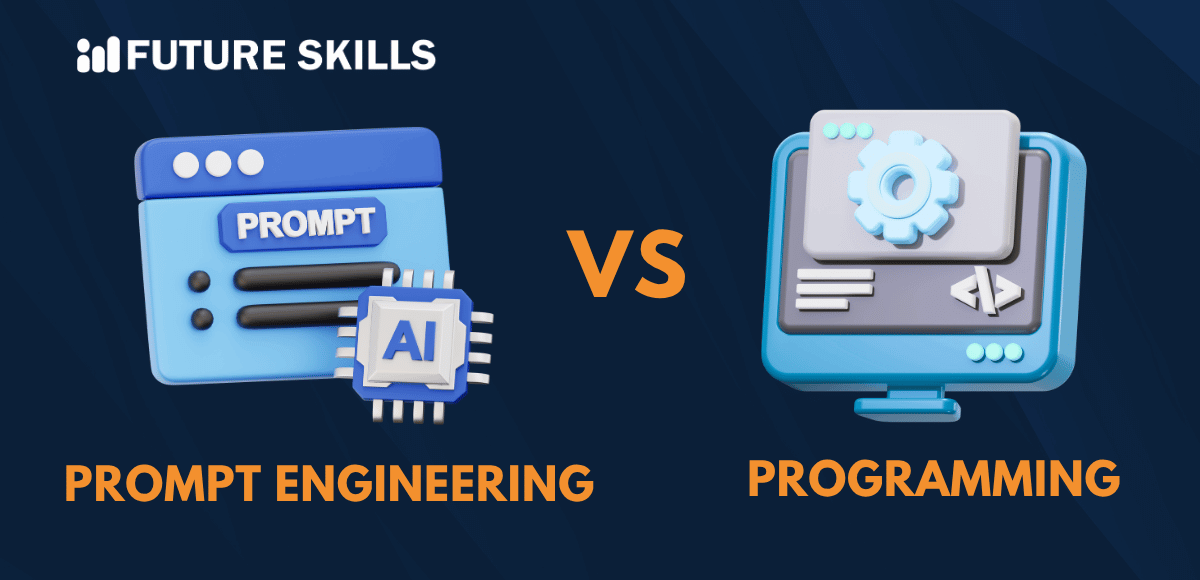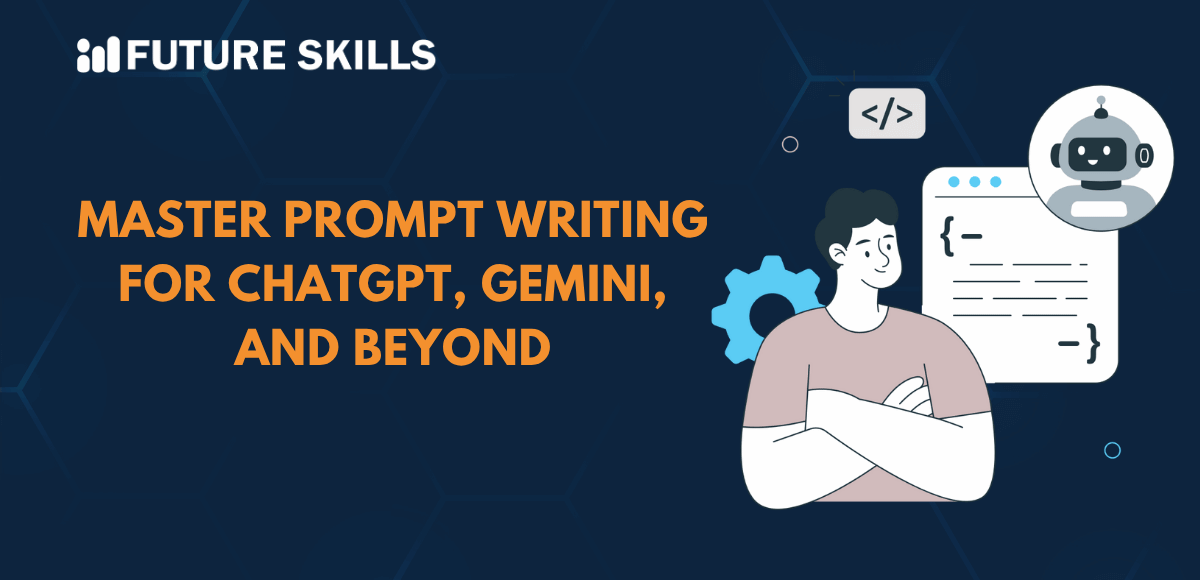The rapid scale of evolution of LLMs has created new possibilities for popularity of generative AI. For example, tools such as ChatGPT and Google Gemini have helped businesses and people achieve new improvements that would have been impossible a few years ago. The best way to use LLMs involves learning about LLM prompt examples and how they help in generating desired results.
Prompt engineering focuses on strategic development of precise inputs for LLMs that can improve the effectiveness of language models. Prompt engineers can create custom instructions or questions for prompts to achieve contextually relevant and accurate responses. The role of prompt engineering in extracting the full potential of LLMs in different generative AI applications invites attention to prompt examples. Let us learn about the examples of prompts used for common LLM tasks.
Why Should You Learn Examples of LLM Prompts?
The growth of LLMs has emerged as a prominent phenomenon in the continuously evolving landscape of technology. LLMs have been changing the approaches for interactions between users and generative AI applications. You must learn the important AI prompt examples as the foundations of prompt engineering to extract the best results from language models. The examples can help you learn the best ways to create precise prompts and utilize generative AI to your advantage.
Prompt engineering provides the best solution to optimize your interactions with AI systems such as ChatGPT. It ensures the development of custom queries that can elicit relevant and accurate responses from language models. Familiarizing yourself with the examples of prompts can help you hone your prompt engineering skills to find your way through the mazes of AI. Practical awareness of prompt engineering begins with an in-depth understanding of prompt examples and how they work.
Level up your ChatGPT skills and kickstart your journey towards superhuman capabilities with Free ChatGPT Course.
How Can You Use Prompt Examples?
You might wonder about the reasons for which you need to learn about prompt examples. For starters, they can help you find answers to questions like “How to write a good prompt for LLM?” and improve your practical understanding of prompt engineering. Most important of all, established patterns for specific tasks during interactions with LLMs can offer multiple advantages. For example, they provide a structured approach for guiding the conversation with LLMs to ensure efficient and coherent information exchange.
Prompt examples can help you understand different patterns, such as persona patterns, cognitive verifier patterns, question refinement patterns, few-shot patterns, and audience persona patterns. The different examples of prompts can help you recognize the use of these patterns. For example, the persona pattern can help users modify the responses of an LLM to specific characters or roles, thereby enhancing the experience. Cognitive verifier patterns enhance the transparency of the thought process of AI systems.
Question refinement patterns can help with the enhanced design of queries to obtain more insightful and nuanced responses. Few-shot patterns help empower users to obtain more targeted and relevant information through subtle modifications in the general conversational flow. Audience persona patterns ensure customization of the user background or their expertise for the prompt, thereby improving relevance.
Embark on a transformative journey into AI, unlocking career-boosting superpowers through our Certified AI Professional (CAIP)™ Certification program.
What are the Examples of Prompts for Common Generative AI Tasks?
The examples of LLM prompts can offer a better understanding of the ways to use prompts for different tasks. Most importantly, every prompt example LLM application uses today can help you learn the essential concepts of prompt engineering. The examples can also show how you can utilize well-designed prompts to work on different tasks, such as information extraction, text classification, reasoning, and text summarization. Let us go through the important examples of different types of prompts for common generative AI tasks.
-
Information Extraction
Language models can work effectively for natural language generation tasks. On the other hand, they can perform classification alongside a wide variety of different NLP tasks. The common LLM prompt examples include the ones for information extraction, as the prompts can help with obtaining desired information from large passages.
The following example shows a prompt for information extraction from a particular paragraph.
The acknowledgment and author contributions in research papers should clearly specify whether the authors used AI technologies such as ChatGPT in preparing the papers. In addition, the papers must show the types of LLMs used to create the content. It can help reviewers and editors in evaluating research papers for inaccuracies and potential biases. Similarly, research journals must also maintain transparency regarding the use of LLMs during the submission of papers. Identify the large language model tool present in the paragraph above.
The output of the prompt would be,
The large language model tool present in the paragraph above is ChatGPT.
With the capabilities for extracting information from large paragraphs, AI systems can help in offering powerful experiences.
-
Text Classification
Prompt engineers can move to the next level of designing prompts by offering better instructions for text classification. The answers to queries like “How to write a good prompt for LLM?” suggest that offering the right instructions would not be enough. You would have to improve the context alongside other elements of the prompt. Some of the important elements in a prompt include input data and examples.
The following example shows a prompt for text classification.
Classify the sentiment in the following text as neutral, positive, or negative. Text: I think the show was okay.
The output for this prompt would be,
Neutral.
Prompt engineers can improve the prompts for text classification by providing more examples of the desired output.
Enroll now in the AI for Business Course to understand the role and benefits of AI in business and the integration of AI in business.
-
Reasoning
Reasoning is one of the toughest challenges for generative AI systems and LLMs. However, AI prompt examples for reasoning tasks are essential requirements to develop LLMs for complex applications. For example, prompt engineering has contributed to improvements in tasks that require mathematical capabilities.
The following prompt is an example of using LLMs for reasoning tasks.
What is the output of 8000 * 8000?
The output would be,
64,000,000
LLMS can also deliver better results for reasoning tasks with the help of additional instructions and examples.
-
Text Summarization
The most standard task of LLMs involves text summarization. You can use a prompt example LLM in text summarization tasks for different domains. LLMs can summarize different concepts and articles to develop easily readable summaries.
The following example shows how you can use a prompt for basic summarization tasks –
Explain digital marketing.
Output
Digital marketing is the collection of tools, techniques, and best practices to promote businesses in the online landscape. It involves the use of different channels, such as social media, email, and search engines, to reach out to customers with marketing messages. Digital marketing helps businesses achieve better value for their investment in marketing efforts.
-
Code Generation
Another prominent addition among LLM prompt examples refers to their applications in code generation. One of the best tools that leverages AI for code generation is Copilot. You can use specially tailored prompts for different types of code-generation tasks.
The simplest example of a prompt for code generation would look like the following.
/* Ask the user for their name and say "Hello" */
The output of this prompt would generate the following code.
let name = prompt(“What is your name?”); console.log(`Hello, ${name}!`);
You can find more advanced examples of prompts for testing the potential of LLMs by investing efforts in prompt design. For example, you can enter the following prompt,
""" Table departments, columns = [DepartmentId, DepartmentName] Table students, columns = [DepartmentId, StudentId, StudentName] Create a MySQL query for all students in the Computer Science Department """
The output of the prompt would look like the following,
SELECT StudentId, StudentName FROM students WHERE DepartmentId IN (SELECT DepartmentId FROM departments WHERE DepartmentName = ‘Liberal Arts’);
You can notice how effective prompts provide more information. In this example, the prompt includes information about the database schema and requests for the generation of a valid MySQL query.
Excited to understand the crucial requirements for developing responsible AI and the implications of privacy and security in AI, Enroll now in the Ethics of Artificial Intelligence (AI) Course.
What are the Best Practices for Developing Prompts?
Prompt engineering is difficult owing to the level of experimentation required to find out what works and what does not. You should know about the important challenges of creating effective prompts to create effective prompts. For example, you should focus on the level of specificity in the prompt. You should provide a clear impression of the reference text or examples to make sure that the prompt understands what it must achieve. On top of that, iterative refinements can also help improve the effectiveness of prompts for different tasks.
Final Words
The different LLM prompt examples show that you can become a prompt engineer without any advanced technical knowledge. With the right words, you can elicit the desired responses from LLMs. The sporadic growth of LLMs and generative AI applications has created the demand for advanced prompt engineering. Therefore, you must learn about prompt engineering from a technical perspective and discover all the essential elements required to create prompts.
On top of it, you must also familiarize yourself with prompting techniques to understand the best ways to utilize your prompting skills. At the same time, prompt examples can help you identify the different patterns that can serve the best results. Discover the best resources to learn prompt engineering and follow professional prospects as a prompt engineer right now.






